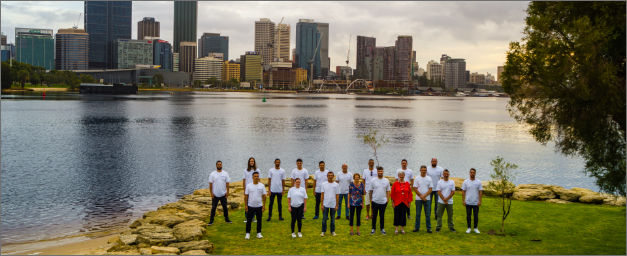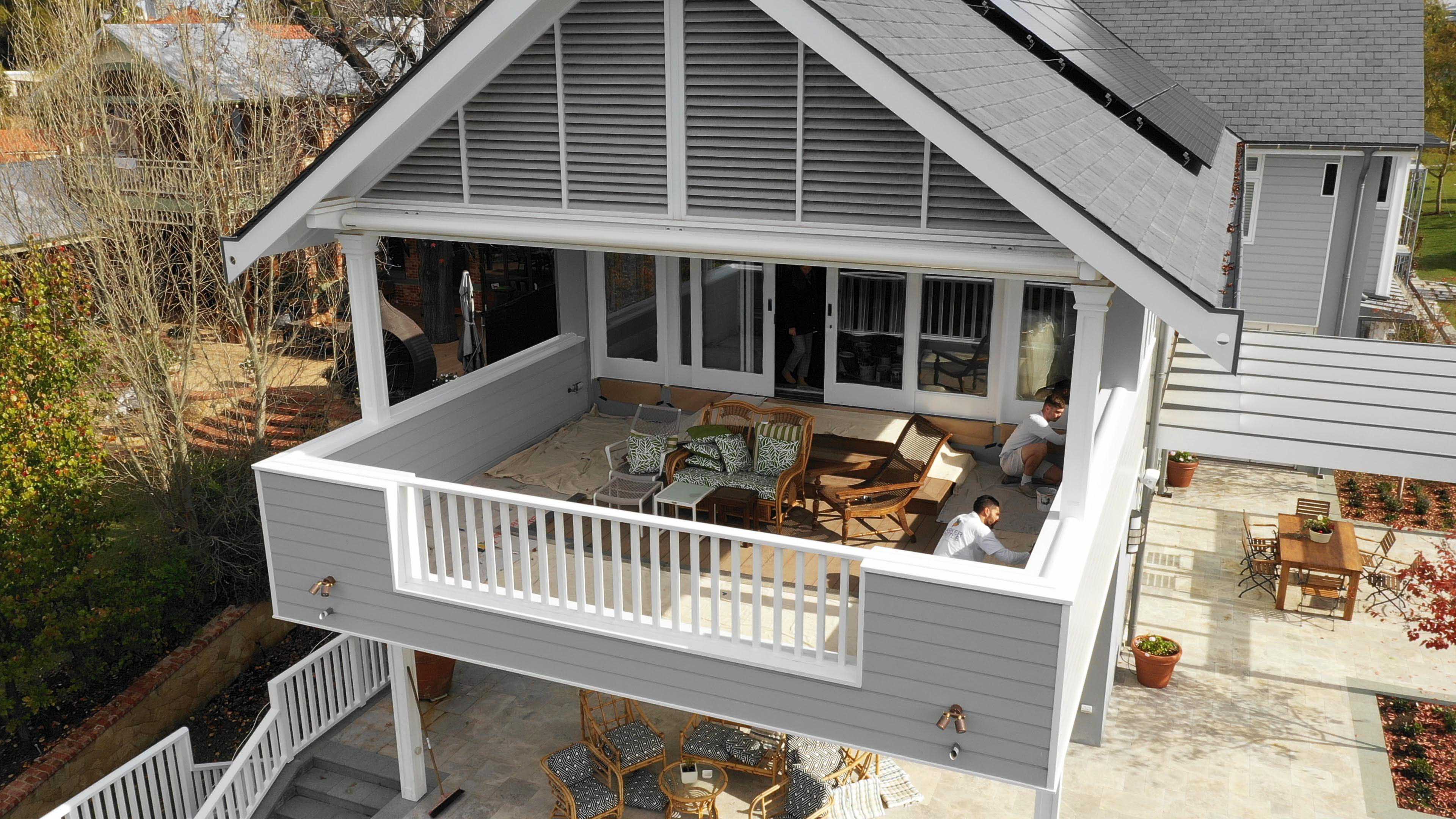Introduction:
A beautifully painted home isn’t just about the broad walls and easy-to-reach spots. Often, it’s the trickier areas – the high, out-of-reach, or confined spaces – that make the difference between a good paint job and a truly great one. Stairwell ceilings, multi-storey exterior walls, roof eaves, narrow alcoves, and lofty cathedral ceilings are just a few examples of hard-to-access areas that can intimidate even seasoned DIYers. The good news is that with the right approach (and often the right professionals), these challenges can be overcome safely and effectively. In this article, we’ll share how to approach painting hard-to-access areas, drawing on Barker-Whittle’s extensive experience in tackling the toughest painting scenarios.
1. Plan and Prepare Thoroughly
When dealing with a hard-to-access area, planning is half the battle. Before you pop open a paint can, take time to:
- Assess the Area: Identify exactly what makes the spot difficult. Is it height, angle, limited space, or all of the above? For instance, a high foyer with a staircase might have both height and an awkward angle over the stairs. Understanding the challenge guides your approach and equipment needs.
- Ensure Stability and Safety: Safety is paramount. Determine how you’ll reach the area – common solutions include extension ladders, scaffolding, or even an elevated work platform (EWP) like a cherry picker for outside high walls. For interiors, specially designed ladder platforms or scaffolding that can adapt to stairs are available. Never compromise on having a stable platform to work from; falls are a serious risk. At Barker-Whittle, our teams always use the proper harnesses and guardrails when required, and so should you if you’re attempting a DIY.
- Gather the Right Tools: Hard-to-reach areas might necessitate additional tools. An extension pole for your roller or brush can significantly extend your reach for high spots (great for ceilings or double-height walls). Angled brushes can help with cutting in edges at tricky angles. If space is tight (like a narrow gap beside a tall cabinet), look for slim or short-handled brushes and rollers made for confined spaces. Having all necessary tools on hand before you start will save you from precarious improvising mid-project.
Proper preparation also means clearing the surrounding area. Remove any furniture or obstacles if indoors, or trim back plants if it’s an exterior tight corner. The more room you have to set up a ladder or scaffold, the safer and easier the job will be.
2. Use Quality Equipment for Height
For towering areas like multi-storey exteriors or high interior ceilings, investing in the right access equipment is key:
- Extension Ladders: A sturdy extension ladder with sufficient length (extending at least a meter or so beyond the reach point for stability) is a basic requirement. Make sure the ladder is in good condition, angles properly, and is set on a stable, level base. If you’re on uneven ground outside, ladder leveling accessories or boards to stabilize are a must. Never lean a ladder on an unsound surface (like guttering that might not support you). It’s often worth having a second person to hold the ladder base steady.
- Scaffolding: For extended work at height or spanning across obstacles (like stairs or a roof overhang), a scaffold system is often safer and more comfortable than a ladder. Portable scaffolding towers can be rented relatively easily. These provide a platform to stand on, so you can work with both hands free and have your paint tools next to you. When Barker-Whittle handles multi-storey projects, we frequently erect scaffolding to ensure our painters can move around freely and focus on the painting rather than constantly worrying about balance.
- Elevated Work Platforms (EWPs): For extremely tall or otherwise inaccessible exteriors – imagine a three-storey home on a slope, or sections above a glass conservatory – an EWP like a boom lift might be the best solution. Operating an EWP requires training (and usually a license for certain heights in Australia), so this is typically a job for professionals. Our crews are certified to use such equipment, which allows us to reach high fascia boards or difficult soffits efficiently. If you’re not experienced with these, don’t attempt to rent one on your own; hire experts who come with the needed skills.
Remember that painting at height often means you’ll be up close with areas that might need extra prep (e.g., sanding a high window frame). So, bring all necessary prep tools up with you to avoid multiple trips. Always prioritize safety by not overreaching – it’s better to climb down and reposition your ladder or scaffold than to stretch too far.
3. Tackle Tight Corners and Confined Spaces
Not all challenging spots are about height; some are simply awkward to get a brush into. Think of behind radiators, the wall above kitchen cabinets, or tight eaves in a roof space. Here’s how to manage:
- Specialty Brushes/Rollers: Use trim rollers (small width rollers) or mini-rollers that can fit into smaller gaps. There are also bendable brush extenders available which let you angle a brush head to reach around corners. A sash brush (which has an angled bristle edge) can make cutting in along edges in a tight spot easier.
- Remove What You Can: If an obstacle like a radiator or vent cover is in the way and can be removed, take it off before painting. It’s much easier to detach something temporarily than to cut perfectly around it. For example, we often remove light fixtures or exterior downpipes when painting those areas – it allows for a more thorough job and then reattach after everything dries.
- Creative Tool Hacks: Sometimes, you can improvise a bit – like wrapping a piece of cloth around a flat stick, dipping it in paint, and reaching into a nook that a brush can’t fit. While professionals have a tool for almost everything, a DIY might require some ingenuity for super tight spots. Just be cautious to secure any DIY tool well (so parts don’t fall off and make a mess of your fresh paint).
- Spray Painting: For exteriors with many nooks (like intricate woodwork on gables or vents), using a paint sprayer can be an efficient way to reach into all crevices. Spraying ensures paint gets into tiny gaps uniformly. However, spraying requires careful masking of surrounding areas and is best left to those with experience to avoid overspray issues. Barker-Whittle uses spraying combined with back-brushing for surfaces like rough timber eaves – this way we coat everything thoroughly and then smooth the finish with a brush.
4. Don’t Skimp on Prep and Primer
Hard-to-access shouldn’t mean “hard-to-see, so it doesn’t matter.” In fact, those areas often suffer the most wear (sun, moisture, neglect) and thus need proper preparation and priming just like any other surface – maybe even more so. If you’re up on a scaffold reaching the third-storey siding, take the time to sand off peeling paint, caulk the gaps in the trim, and spot-prime those raw spots. It might be tempting to do a quick pass and get down, but cutting corners (figuratively!) will lead to peeling or patchy results sooner. Our team treats hidden eaves and lofty surfaces with the same thorough process as reachable ones. We know that doing it right the first time means not having to go back up again for repairs.
Use high-quality primers that are appropriate for the surface – for instance, a stain-blocking primer for water stain on a ceiling or a bonding primer for a slick high trim. This foundation will ensure your topcoat adheres well and lasts.
5. Know When to Call Professionals
Painting is rewarding, but when it comes to very hard-to-access areas, sometimes the safest and most cost-effective approach is to hire professionals. A reputable painting company like Barker-Whittle has trained personnel and all the necessary equipment to handle these tough spots. Consider calling in experts if:
- The area requires extensive ladder work or scaffolding that you’re not comfortable with.
- The height is beyond your safe reach (second story and above exteriors, or very tall interior vaults).
- The configuration is complex (e.g., painting a high ceiling over a staircase – a classic tricky job).
- You simply don’t have the time or helpers to do it safely.
Professionals will also be insured, meaning if anything unthinkable happens (damage or accident), you’re not left bearing the cost. They can likely do the job faster and with a better finish due to experience. For example, at Barker-Whittle, we have completed countless projects involving difficult access – we come prepared with scaffold systems, ladders of all sizes, and safety gear. We even have solutions for rope-access painting in certain commercial scenarios. What might take you a whole week of nerve-wracking effort balanced on a ladder, our team could accomplish in a day or two with confidence.
6. Barker-Whittle’s Hard-to-Access Expertise (Case in Point)
To illustrate how challenging areas can be handled, let’s share a brief success story. We were tasked with repainting a gorgeous heritage home in Perth that had a three-storey turret and very intricate woodwork along the eaves. The house’s height and detailed trim made it a textbook hard-to-access project. Our approach was to:
- Erect custom scaffolding that contoured around the turret, giving our painters a safe platform to reach all angles.
- Use small detail brushes and sprayers for the lace-like wood fretwork, ensuring coverage in every crevice.
- Work in stages from top to bottom, so no section was missed and safety was maintained (no painters above others at any time).
The result was a beautifully refreshed turret, with crisp paint on every spindle and soffit. The homeowners were relieved – they had wondered how anyone could paint that area, and by calling professionals, they saw it done without any hassle on their part. This is just one example; whether it’s a modern home with a double-height foyer or an apartment block’s upper levels, we have the know-how to get the job done right.
Conclusion:
Hard-to-access areas may require extra effort and ingenuity, but they are far from impossible to paint. By planning carefully, using the proper equipment, and not cutting corners on preparation, you can achieve a result that blends seamlessly with the rest of your paint job. Always put safety first – if there’s any doubt, bring in professionals who handle these challenges regularly. Barker-Whittle takes pride in being the go-to team for difficult painting projects in Perth and beyond. So next time you look up at that high peeling paint or that tricky corner and sigh, remember: we can reach it, and we can make it beautiful. With the right approach, every inch of your home can get the premium paint treatment it deserves.


